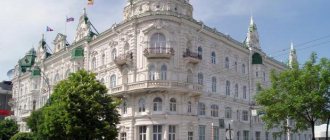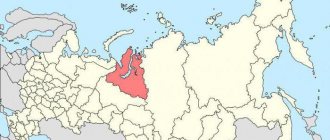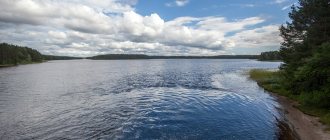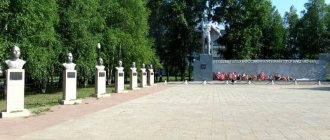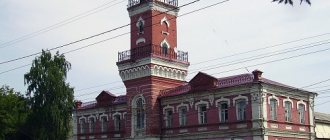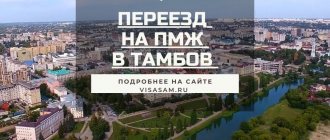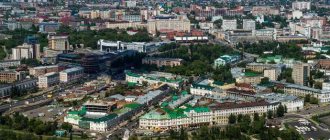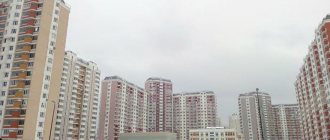City `s history
The settlement got its name from the river of the same name. The population of Samara was first discovered in 1646. Then the first census was carried out. Since 1719, the settlement belonged to the Astrakhan province. At that time, there were only about 200 households in Samara. The rapid development of the settlement began in 1850, when a decree was created on the formation of the Samara province. In the center there was a settlement with a population of 15 thousand people. During the revolution in 1917, the city did not suffer significant losses. The population continued to grow.
During the Soviet Union (in 1928), the city became the center of the Middle Volozhsk region. At the same time, it had a different name - Kuibyshev. The city's population continued to grow. And even during the Great Patriotic War there were no great losses. By 1979 the population had already exceeded 1 million.
Modern Samara is a metropolis that is rapidly developing economically and culturally. People from neighboring provinces come here to work. Many of them remain forever.
Samara
Monuments of Samara
City Park
Monuments, sculptures, steles, various art objects, memorial plaques, busts are part of our life, original bridges connecting the past, present and future. In Samara you can find many objects of large and small architectural forms dedicated to various events in the life of our country and the city of Samara.
The main monument of Samara, and earlier of Kuibyshev, is, of course, the Monument of Glory. This is one of the main symbols of Samara, it is visible from many places in the city. It is located on the Square of Glory. Another monument dedicated to the labor feat of the residents of the city of Kuibyshev in the Great Patriotic War was the legendary Il-2.
Another real object - the wartime car ZIS-5 is located at the intersection of XX11 Party Congress and Red Communards streets. This monument was opened on May 15, 1985 in honor of the 40th anniversary of the Victory and is dedicated to the feat of drivers during the Great Patriotic War.
Another “real” monument - the Soyuz launch vehicle - is dedicated to space Samara. On Kozlov Square (the intersection of Lenin Ave. and Novo-Sadovaya St.), right on the building of the Samara Space Museum, there is a copy of the rocket launched in 1984 by Kuibyshevsky. In 1999, the rocket, which had exhausted its service life, was donated to the plant, and in 2001, the 68-meter R-7 rocket was solemnly installed. In 2007, an “alley of love” was opened next to the rocket.
One of the unspoken symbols of the city is the monument to the legendary division commander V.I. Chapaev, who traveled with his brigade in the Volga steppes during the Civil War.
By the way, on Chapaev Square there is also a monument to A.S. Pushkin, and in the park located here. Pushkin you can see the interesting sculptural composition “Lady with a Racket”, which was installed in 2011 in honor of the 100th anniversary of tennis in the Samara region. From the territory of the park there is a magnificent view of the Volga, Strukovsky Garden and Zhigulevsky Brewery. Representatives of various youth subcultures like to spend time in the park (in common parlance - Pushka).
Many interesting sculptures can be seen on the embankment, and near the entrance to the botanical garden, the heroes of K. Chukovsky’s poem “Telephone” - the Elephant, Monkey, Crocodile and Gazelles - came to life in bronze. Also in Samara there are 9(!) monuments to V.I. Lenin. Also, speaking about revolutionary figures, we recommend visiting Kuibyshev Square.
Designers working in a modern style also paid attention to the city - in 2013, on the street. Molodogvardeyskaya there appeared “The Sign in Samara with which everyone takes pictures” - an art object from Artemy Lebedev’s studio installed on the initiative of bloggers. Those interested can take a photo with this work of art at the address: pl. Slavy, st. Molodogvardeyskaya, 4.
Theaters of Samara
Theater lovers can attend performances of the Academic Drama Theater named after. M. Gorky and the Academic Opera and Ballet Theater. Popular among residents and guests of Samara are the performances of the theaters “Samarskaya Square” (Sadovaya St., 231), “Chamber Stage” (Nekrasovskaya, 27), Theater of Young Spectators (Lva Tolstoy, 109), children’s musical theater “Zadumka” (Osipenko, 6 ).
The Samara State Philharmonic, one of the oldest in Russia, located in the building of the former Olympus Theater-Circus, is very popular. The building itself is a magnificent example of Art Nouveau architecture. Philharmonic address: st. Frunze, 141.
One of the oldest (opened in 1930) is the House of Officers of the Samara Garrison, located on the street. Shostakovich, 7. Concerts of the best Russian and foreign performers regularly take place here.
Museums of Samara
You can't ignore Samara's museums. There are more than 160 of them in the region, most of them are, of course, located in Samara. Among them there are museums with unique collections, such as the Samara Regional Museum of History and Local Lore. P. V. Alabina. This is one of the oldest museums in the Volga region, created at the end of the 19th century on the initiative of the city mayor of Samara, Pyotr Vladimirovich Alabin. The museum also includes the M. V. Frunze Museum, the V. I. Lenin House Museum in Samara and the A. P. Kurlina Mansion - these are its branches. Of undoubted interest is the mansion of A.P. Kurlina, where the Museum of Art Nouveau is located. You can read more about museums and opening hours, as well as how to get there, by following the links above.
Another unique collection is located in the Samara Regional Art Museum and includes more than two thousand works of Russian and foreign art.
For lovers of history and literature, the Alexei Tolstoy Museum will be of interest, located on the territory of a city estate of the second half of the 19th century and recreating a picture of the life of a poor noble family of that time.
There are also many thematic museums in Samara. Here are some of them: Museum of Archeology of the Volga Region SSPU (Leninskaya, 123, tel. 8-846-332-80-48); one of the largest and oldest Zoological Museum in the Volga region; Military-historical museum of the Red Banner Volga-Ural Military District, where you can see a cart and a Maxim machine gun (Rabochaya, 1, opposite the Drama Theater, opening hours Tue. - Fri. 10 a.m. to 1 p.m. and 1 p.m. to 5 p.m., Sun. 10 a.m. to 5 p.m. 16, tel. 8-846-232-09-70); Museum of Banking (Kuibysheva, 93, in the Sberbank branch).
Participants of pilgrimage tours will certainly be interested in visiting the Samara Diocesan Church History Museum. And sports fans will certainly enjoy the Samara Football Museum, created by the Krylya Sovetov football club. Fans of various mysteries and mystics should appreciate the house “Stone Zoya”.
Sights of Samara for children
State Medical University
On the territory of the training ground of the Samara Academy of Railways of the Volga Region Museum of Railway Technology, located on almost two hectares, you can see with your own eyes various types of carriages, steam locomotives and diesel locomotives, and there is a children's railway for young visitors.
Children will be delighted by the only frog museum in Russia, where excursions are conducted in the form of a theatrical performance. The museum is located at: Krupskaya, 1, Stroydom shopping center, 6th floor, open daily from 9:00 to 20:00, tel. 8 (846) 272-92-80.
By the way, for children in Samara there is also a Children’s Art Gallery, which consists of four areas.
The Mobius Museum of Entertaining Sciences will be of interest not only to children, but also to adults. Each visitor will receive an unforgettable experience and will be able to take part in scientific experiments. Children will learn a lot of new things through play, and adults will remember physics and other natural sciences.
Children will also like the good quality and rich Samara Zoo.
In the cultural exhibition hall you can visit an exhibition of photographs from all over the world for free. The exhibition is not only located in 16 Samara halls, but also travels around the world - more than eight million people visited it in more than 500 cities around the world! In Samara, views of the most beautiful places on the planet can be seen at the address: Michurina, 23, every day, except Monday, from 10.00 to 18.00. Tel., 8 (846) 270-32-89.
The Samara Museum of Photography is also unique. This is the only educational interactive photo museum in the country, where, in addition to rare exhibits, classes and master classes are regularly held.
The S.P. Korolev Museum of Aviation and Cosmonautics introduces residents and guests of Samara to units and models of aviation and rocket and space technology, as well as the activities of the previously highly secret Samara Aerospace Complex. Museum address: Moskovskoe highway, 34a, building No. 3 SSAU, tel.,. Visiting by appointment from Mon to Fri from 10 a.m. to 5 p.m.
Another museum dedicated to space, “Space Samara,” also contains a number of unique exhibits—spacecraft, a space suit, “space food,” and the façade of the museum building is “decorated” with a real Soyuz rocket, the only one in Europe in its “natural” form.
Sights of Samara
Monument to Chapaev
Particularly popular among tourists, especially foreign ones, is the Stalin Bunker, which was declassified and became a museum in 1991.
Lovers of above-ground architecture also have something to do in Samara. In the old town, buildings not only from the era of the Provincial Town (from 1851 to 1917), but also from the earlier period of the “county town” have still been preserved. The Samara buildings built in the Art Nouveau style stand out especially. The mansion of A. Kurlina, which houses the Museum of Art Nouveau, is rightfully considered the “pearl of Samara Art Nouveau”. Also interesting is the mansion of A.F. von Vacano on the street. Shostakovich, 3, Lidefort House on Chapaevskaya, 110, built in 1889, the mansion of the Shikhobalov merchants (55 Ventsek St.), the building of the Furor cinema on the street. Sadovaya, 231.
The building of the Peasant Land Bank on the street. Kuibysheva, 153 is an example of northern modernism, created in 1909 by the St. Petersburg architect Alexander von Gauguin. The original building was designed and built in 1909 by Samara merchant and self-taught artist Konstantin Golovin. This house is on the street. Soviet Army, 292, is popularly known as the “House with Elephants.”
The mansion of the merchant Suroshnikov was built by the famous academician of architecture Fyodor Shekhtel; you can see it on the corner of Pionerskaya and Alexei Tolstoy streets. Another original house, built in a half-timbered style unusual for the Volga region, seems to have been transported from German fairy tales to Frunze Street, 75a.
Less known are such interesting buildings as the Subbotina-Martinson mansion (Lva Tolstoy, 30), the Poplavsky house (Frunze, 171), the mansion of N. S. Zhogolev (Galaktionovskaya, 57), the House of Old Believers (Galaktionovskaya, 82) and other buildings of the old city . Unfortunately, the condition of some of the original ancient buildings leaves much to be desired, and they are slowly but surely disappearing under the excavators of developers.
Temples of Samara
Temple of St. George the Victorious
Fortunately, the surviving religious architectural monuments are in much more decent condition. Samara has long been distinguished by its multinationality and religious tolerance, evidence of which is the churches of various faiths, built before the revolution and currently operating. Most of them are architectural monuments of federal significance. Most of the religious buildings are located in the historical center of the city.
The Iversky Convent is of great importance for Samara. It was founded not so long ago compared to the monasteries of the cities of the Golden Ring - “only” in 1850. At the beginning of the 20th century, the monastery complex consisted of three churches and various outbuildings - baths, laundries, a hospital, and residential buildings. The monastery was rightfully considered the center of the spiritual life of the city.
Ascension Cathedral is the oldest of the temples in Samara. This is the only Temple built in the classicist style and was consecrated in 1847.
Sophia Temple - The Temple in the name of the holy martyrs Faith, Hope, Love and their mother Sophia, consecrated in 1998, is interesting because the interior of the Temple was restored by restorers to its original form.
The Cathedral in honor of the Intercession of the Mother of God (consecrated in 1861) was built in the style of Moscow temple architecture of the 17th century. Service there did not stop even during the years of Soviet power. Address: Leninskaya, 75 a.
The true decoration of the city is the Roman Catholic Church of the Sacred Heart of Jesus, the only church in the Volga region. The temple, built at the end of the 19th century, raised its spiers to a height of 47 meters - this is the tallest building in the old city. The temple holds services, but is also open for guided tours.
The building of the Samara Choral Synagogue, built in 1908 in the pseudo-Moorish style, is interesting. Once this synagogue was one of the ten most beautiful synagogues in the world, but now it is in disrepair, although funds for the restoration of the building were allocated from the budget several times. You can see traces of its former splendor at the corner of Sadovaya and Leningradskaya streets.
In 1863, the Evangelical Lutheran Church of St. George was consecrated, the austere beauty of which can be appreciated on the street. Kuibysheva, 117.
Temple in honor of St. Spyridon the Wonderworker of Trimifunt
To complete the picture of the religious life of Samara, the Samara Mosque should also be noted. Historical building on the street. Alexei Tolstoy, 61a, was distorted by alterations. But in 1999, at the intersection of Stara Zagora and 22 Party Congress streets, the Samara Cathedral Mosque with a minaret height of 67 meters was opened to the faithful. This is one of the largest mosques in Europe.
Another attraction of Samara is Leningradskaya Street (“Samara Arbat”) - the only street in honor of a non-existent city. If you want to combine a leisurely walk with a tour of architectural monuments and simply beautiful historical buildings, then this is the place for you.
Among the recreational places in Samara, it is worth noting the Central Park of Culture and Leisure named after. M. Gorky, located between the Volga River and Novo-Sadovaya Street. This is the largest park in the city, also called the Country Park.
Another great place for leisurely walks and enjoying nature in Samara is the Botanical Garden of Samara State University. More than 3,000 species of plants grow on 40 hectares, there are two ponds and a six-meter alpine slide. In the only greenhouse in the entire Volga region, tropical fruits and plants bloom even in winter.
Also, don’t forget about Gagarin Park and Voronezh Lakes Park.
You can enjoy magnificent views of the Volga and Zhiguli Mountains from the Helipad in the Administrative Town. It is called that because during the Soviet years the service helicopter of the chief designer of the aircraft engine plant landed here. The name stuck, and now “Helicopter” is one of the favorite vacation spots of the townspeople. Guests of the city are certainly brought here. The view from the site really is like from a helicopter. “Helicopter” is equipped with benches, flower beds and flower beds, there is a cafe, and there is paid parking. Amazing landscapes and fresh wind have a fascinating and calming effect. You can get there by buses No. 1 and No. 50 to the “Upravlencheskiy” stop and then on foot, but it’s better by car.
Physiographic characteristics of the city
The settlement is located on one of the banks of the large Volga River. It is no coincidence that the population of the city of Samara has been gradually increasing since ancient times. People sought to live closer to the reservoir in order to farm and fish. The locality lives according to Samara time (plus one hour relative to Moscow). The city is predominantly flat, with ravines here and there. Samara is located at an altitude of 286 meters above sea level.
The settlement has a temperate continental climate. Winters here are mild and summers are not hot. Average annual temperature +5…+6 °C. The hottest month is August. The maximum temperature was recorded at 39 °C. The absolute minimum temperature was recorded during the war years. In the winter of 1943, the thermometer showed 43 degrees below zero.
Samara is a large city in which the issue of ecology is acute. There are many enterprises operating in the locality that negatively affect the chemical composition of the air.
Where is Samara?
Samara is located in the Middle Volga region (territories of the Volga Current), located on the banks of the Volga before the Lower Volga (Volgograd, Astrakhan). More precisely, on the banks of the Saratov reservoir, between the two rivers Samara and Sok.
Opposite the place where the city of Samara is located, there is a unique natural monument Samara Luka - a bend of the Volga that goes around the Zhiguli Mountains.
Samara is connected to the rest of Russia by air and rail, highways, and waterways - the Volga has at all times been the main shipping artery in the European part of the Russian Federation.
Population by year
Samara occupies a leading position in terms of population. What place is given to the settlement? The Samara-Togliatti agglomeration is in third place after St. Petersburg and Moscow. However, the city was not always considered a megalopolis. At the beginning of the 20th century, only 150 thousand people lived here. The city developed rapidly, its area expanded. By 1970, the population exceeded 1 million people. According to official data for 2021, 1 million 169 thousand people live in the metropolis.
The demographic situation in the city has begun to change significantly since the beginning of the 21st century. The number of deaths has decreased, and the birth rate has increased. Not only Russians are born here, but also representatives of other nationalities of post-Soviet countries. Ukrainians, Belarusians, Tatars, Chuvashs, etc. live in Samara.
Population of Samara
Now Samara has 1,156,659 thousand inhabitants, this is an impressive figure within Russia. Meanwhile, I note that the population of Samara has been declining quite noticeably in recent years compared to the Soviet period.
See for yourself:
| Year | Population |
| 1931 | 222 308 |
| 1970 | 1 044 849 |
| 1982 | 1 243 000 |
| 1993 | 1 232 000 |
| 1996 | 1 192 000 |
| 2004 | 1 144 200 |
| 2009 | 1 164 685 |
| 2017 | 163 719 |
I believe that the outflow of residents is directly related to economic and social problems that the city cannot survive after the collapse of the USSR.
Administrative structure and power
The city is divided into nine districts. The largest population is recorded in the Industrial District (about 280 thousand people). The bulk of enterprises and business centers are concentrated here. Despite the large population, this area experiences the highest levels of air pollution. The second most populous region is Kirovsky District. Home to 225 thousand people. The environmental issue is also acute here.
What is the population in Samara? The city consists of several municipalities that cannot be considered separately. The smallest population was recorded in the Samara region. Only 30 thousand people live here. Next come the following districts: Leninsky, Kuibyshevsky, Krasnoglinsky, Zheleznodorozhny, Oktyabrsky and Sovetsky.
The city administration consists of the Samara Duma and the head (mayor) of the city. The Duma includes 36 municipal deputies who are elected by city residents. Regardless of the population of Samara over the years, the main role in managing the city is given to the people. People independently choose those responsible for managing the main city organizations.
Samara on the map
Samara on the map of Russia is located in the southeast side, down and to the right, when looking from Moscow to Kazakhstan and Bashkortostan. The first thing your gaze rests on is the Kuibyshev Reservoir, just down the Volga lies Samara.
You can navigate along the M5 Moscow-Chelyabinsk highway, covering almost a thousand kilometers from Moscow through Ryazan, Mordovia, and Penza with your eyes.
Distance to the nearest and major cities:
- Moscow – 1063 km;
- Cheboksary – 475 km;
- Chelyabinsk – 865 km;
- Ufa – 462 km;
- Penza – 427 km;
- Ulyanovsk – 243 km;
- Tolyatti – 95 km;
- Syzran – 188 km;
- Novokuibyshevsk -36 km.
Distances are covered quickly thanks to good roads.
The area of the city is 541 sq. km, it is 50 km in length and 20 in latitude, in this regard I can note a couple of Samara records:
- Kuibyshev Square is the largest city square in Europe;
- The Volga embankment is one of the longest.
A map of Samara shows that the area occupied by the city has an irregular shape and is heavily indented in the northern part by bodies of water.
There are nine districts in Samara:
- Samara is a cultural, shopping, entertainment center and historical center of the city, where the Samara town was founded many centuries ago;
- Leninsky is also a historically long-established district, now the business and administrative center of the city;
- Oktyabrsky is the geographical center of the city;
- Zheleznodorozhny – it houses the world’s highest railway station;
- Soviet - it has many universities, enterprises, parks, good residential infrastructure;
- Promyshlenny is the youngest district, where residential neighborhoods alternate with industrial sites;
- Kirovsky is a concentration of enterprises of various types;
- Krasnoglinsky is a remote area on the Sokoli Mountains;
- Kuibyshevsky is a “suburban” district of the city.
Economy and industry
The population of Samara is rapidly increasing due to good economic development. There are many enterprises operating in the city, creating jobs for local residents and visitors. Great attention is paid to mechanical engineering and metalworking. There are more than 150 enterprises of various capacities operating in the settlement. One of the largest enterprises is ZhBI-Povolzhye. Thanks to his work, there has been a significant increase in the city budget.
The city is also developing well in the trade sector. Samara's population is growing due to young people who come to the city in search of well-paid work. The guys look for interesting jobs and then stay in the city forever. Young people mostly work in trade and services. There are federal chain stores in Samara, such as Perekrestok, Pyaterochka, Spor, etc.
Education
With the growth of the population in Samara, the need for new educational institutions also appeared. New schools and universities began to open here at the beginning of the 20th century. Today there are more than 200 kindergartens, about 180 secondary schools, and 37 universities in the city. There are also institutions of further education here.
You can hear a lot of good reviews about the Povolozhsk State Social and Humanitarian Academy. The university was founded back in 1911. Then it was the Samara Pedagogical Institute. Today, children who want to become teachers in chemistry, physics, biology, mathematics, Russian language, etc. can be trained here.
Many guys specially come to the metropolis to enter the Samara State Economic University. The educational institution was founded in 1931. Already in those years, children could receive an economic education at the European level.
History of Samara
A brief history of Samara - founded in 1586 as a fortress on lands inhabited by nomadic tribes to control shipping along the Volga and the southern borders of the country.
In the 17th-19th centuries there was a provincial provincial town with merchants, landowners and, accordingly, crafts and trade. 20th century - factories, population, theaters were evacuated to Samara during the war, after the end there was rapid growth of industry.
Just for the sake of those places where Samara is located, you can already go on a trip! A concentration of cultural, historical, natural monuments and attractions, a great many references to the Golden Horde and picturesque surroundings - all this is Samara and the middle Volga region of Russia!
Healthcare
The system of providing medical care to the population of Samara began to develop in 1825. At that time the settlement was considered a district town. A clinical hospital with 56 beds was opened here for the first time. Even then, people were provided with high-quality therapeutic care. By 1917, there were already 5 hospitals operating in the city. In addition, there was a tuberculosis dispensary and a psychiatric clinic. By the beginning of the Great Patriotic War, Samara already had 23 hospitals.
Today there are more than 70 outpatient clinics in the city. The population of Samara is more than 1 million. Therefore, there should be a lot of hospitals in the city. There are also numerous private clinics in the city. In 2008, a new center for providing emergency medical care on the water began operating.
Transport
In a large metropolis it is impossible to do without public transport. The Samara tram began operating in 1895. More than 20 routes have now been developed. Residents can get to any point in the village. Since 1926, a municipal bus has been operating in Samara. Transport travels along 48 routes. There are also 14 trolleybus routes.
Samara is one of the few regional centers with a metro system. There is one branch for 10 stations. The fare is 23 rubles, payment is accepted in cash. Schoolchildren and students can save money. However, you will first have to obtain a special travel document. Many residents in Samara still prefer to travel by minibuses. The fare is 25 rubles.


